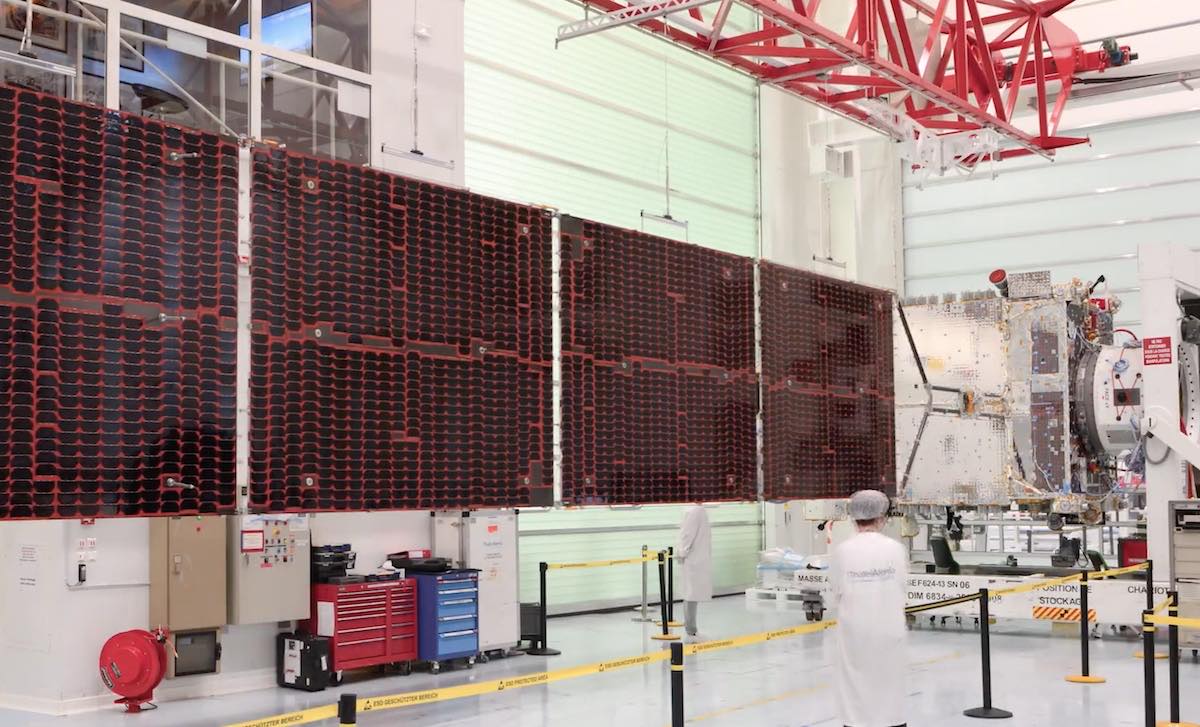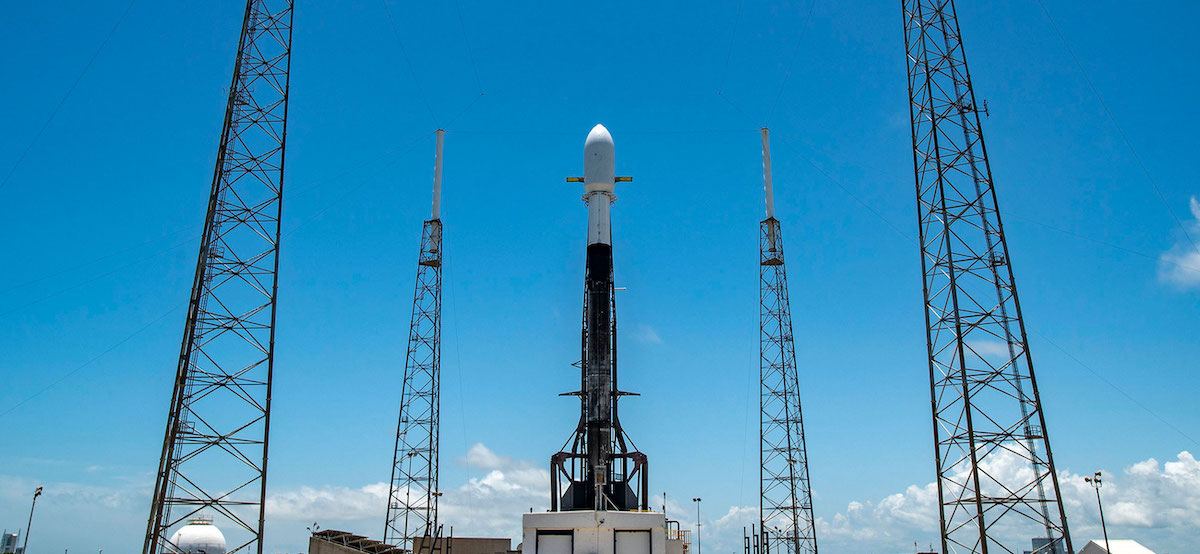
An Egyptian-owned communications satellite is nestled in the nose cone of a SpaceX Falcon 9 rocket for launch Wednesday from Cape Canaveral, heading for an orbital position more than 22,000 miles over the equator.
The Nilesat 301 satellite is set to begin a 15-year mission beaming television programming, data services, and internet connectivity to Egypt and neighboring regions in the Middle East and Africa.
SpaceX rolled the Falcon 9 rocket with the Nilesat 301 satellite to pad 40 at Cape Canaveral Space Force Station on Tuesday. A hydraulic lift mechanism raised the 229-foot-tall (70-meter) vertical for final checkouts leading into Wednesday’s countdown.
The mission will be SpaceX’s 23rd launch of the year, and the first of up to six Falcon 9 rocket flights scheduled for June.
SpaceX will load a million pounds of densified, super-chilled kerosene and liquid oxygen propellants into the Falcon 9 in the final 35 minutes of the countdown Wednesday. The Falcon 9 will transition to internal power and pressurize its propellant tanks before igniting nine Merlin main engines at T-minus 3 seconds.
After passing an automated health check, computers will command four hold-down clamps to open, clearing the way for the Falcon 9 lift off from pad 40 with 1.7 million pounds of thrust.
Launch time is set for 5:04 p.m. EDT (2104 GMT) Wednesday at the opening of a 2-hour, 29-minute window. Forecasters from the U.S. Space Force predict a 60% chance of favorable weather for launch Wednesday, with the primary concern associated with threatening clouds from nearby thunderstorms.
Once it departs the pad, the Falcon 9 will arc toward the east from Cape Canaveral over the Atlantic Ocean and exceed the speed of sound in about one minute. The first stage booster will shut off its engines and separate from the Falcon 9’s upper stage at T+plus 2 minutes, 37 seconds.
The booster stage will coast through space for a few minutes before plunging back into the atmosphere to target a vertical, rocket-assisted landing on SpaceX’s drone ship in the Atlantic nearly nine minutes after liftoff.
The Falcon 9’s first stage — tail number B1062 — will be flying for the seventh time. It debuted with the launch of a U.S. military GPS satellite on Nov. 5, 2020, and has since launched another GPS payload, the Inspiration4 and Axiom’s Ax-1 private astronaut missions, and two missions carrying Starlink internet satellites into orbit.
On its previous six flights, the booster has carried 104 satellites and eight people toward orbit.
The Falcon 9’s upper stage will ignite its single Merlin engine two times, first to reach a temporary parking orbit, then to propel Nilesat 301 into an elongated transfer orbit stretching tens of thousands of miles above Earth. Deployment of Nilesat 301 from the Falcon 9’s upper stage is scheduled about 33 minutes into the mission.
Built in France by Thales Alenia Space, Nilesat 301 will support Ultra HD television broadcasts and replace the Nilesat 201 spacecraft launched in 2010. The spacecraft is owned by Nilesat, a company controlled by Egyptian government organizations.
“The capabilities of the new satellite also include providing broadband internet services to cover the Arab Republic of Egypt and remote areas to provide internet services for new projects, infrastructure projects, new urban communities, and oil fields in the eastern Mediterranean, especially the Zohr field,” Nilesat said on its website.
Thales delivered Nilesat 301 to Cape Canaveral last month after a trans-Atlantic trip by boat from France. The launch of Nilesat 301 was delayed from late April after the planned means of transport — a Russian-owned Antonov cargo plane — became unavailable in the wake of sanctions imposed by Western governments due to Russia’s invasion of Ukraine.

Nilesat 301 weighs about 4.1 metric tons, or roughly 9,000 pounds, fully fueled for launch, according to Nilesat. The satellite will unfurl its power-generating solar panels and use its own engine to maneuver into a circular geostationary orbit more than 22,200 miles (nearly 35,800 kilometers) over the equator.
In that orbit, the satellite will circle the planet every 24 hours, matching Earth’s rotation to settle in a position at 7 degrees west longitude to begin a planned 15-year service life for Nilesat.
Nilesat 301 hosts Ku-band and Ka-band telecom payloads, including 38 transponders, to broadcast signals to Nilesat customers. Nilesat 301 will replace and expand coverage provided by Nilesat 201, reaching new customers in East Africa and sub-Saharan Africa.
“We look into the future with many strategic partnerships among our fellow African countries, and for this Nilesat has built its vision towards its natural expansion in the sub-Saharan Africa with the new Nilesat 301 satellite,” Nilesat said.
Established in 1996, Nilesat says its current satellites reach more than 56 million households with more than 270 million viewers across North Africa, the Middle East, and the Gulf regions.
The new Nilesat 301 satellite is the fourth to be procured and launched for Nilesat, which also leases capacity on third-party communications satellites.
Nilesat 301 will also operate in tandem with the TIBA 1 satellite directly owned by the Egyptian government. TIBA 1, which launched in 2019, provides civilian and military broadband and data relay services.
Email the author.
Follow Stephen Clark on Twitter: @StephenClark1.
